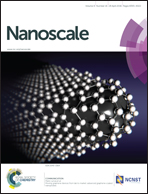Tunable and amplified Raman gold nanoprobes for effective tracking (TARGET): in vivo sensing and imaging†
Abstract
We describe the development of a highly tunable, physiologically stable, and ultra-bright Raman probe, named as TARGET (Tunable and Amplified Raman Gold Nanoprobes for Effective Tracking), for in vitro and in vivo surface-enhanced Raman scattering (SERS) applications. The TARGET structure consists of a gold core inside a larger gold shell with a tunable interstitial gap similar to a “nanorattle” structure. The combination of galvanic replacement and the seed mediated growth method was employed to load Raman reporter molecules and subsequently close the pores to prevent leaking and degradation of reporters under physiologically extreme conditions. Precise tuning of the core–shell gap width, core size, and shell thickness allows us to modulate the plasmonic effect and achieve a maximum electric-field (E-field) intensity. The interstitial gap of TARGET nanoprobes can be designed to exhibit a plasmon absorption band at 785 nm, which is in resonance with the dye absorption maximum and lies in the “tissue optical window”, resulting in ultra-bright SERS signals for in vivo studies. The results of in vivo measurements of TARGETs in laboratory mice illustrated the usefulness of these nanoprobes for medical sensing and imaging.

- This article is part of the themed collection: Celebrating our 2019 Prize and Award winners

 Please wait while we load your content...
Please wait while we load your content...